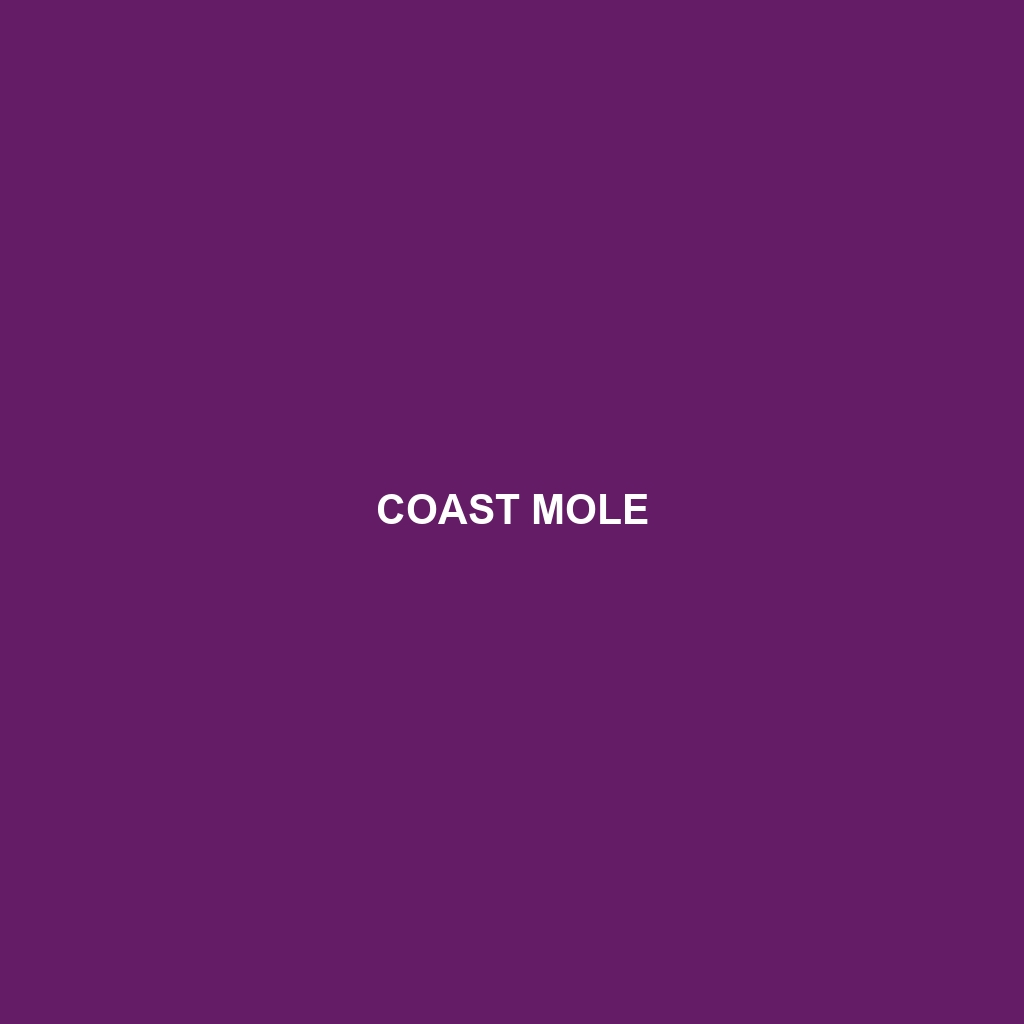Coast Mole (Scapanus orarius)
Habitat:
The Coast Mole is primarily found along the western coast of North America, ranging from southwestern British Columbia to central California. This species prefers moist environments, such as coastal marshes, grasslands, and forested areas near streams and rivers, where it can easily burrow into the soft soil.
Physical Characteristics:
The Coast Mole typically measures between 6 to 8 inches in length and weighs around 4 to 6 ounces. Its fur is a velvety dark brown, almost black, providing excellent camouflage in its natural habitat. Distinctive features include its broad, spade-like forelimbs adapted for digging and its small, pointed snout, which aids in foraging for food beneath the surface.
Behavior:
Coast Moles are primarily solitary and are known for their extensive burrowing activities. They are most active during the early morning and late afternoon, using their keen sense of smell to locate food. These moles are also known for their ability to create vast underground tunnel systems, which serve as living quarters and hunting grounds. Their unique behaviors are often studied to understand their ecological impacts in their native environments.
Diet:
The diet of the Coast Mole mainly consists of earthworms, grubs, insects, and roots. During the spring and summer months, they are particularly active in feeding, utilizing their sharp claws to dig through the soil in search of these food sources. Their feeding habits play a crucial role in aerating the soil and controlling pest populations.
Reproduction:
Breeding season for the Coast Mole occurs in the spring, with females giving birth to litters of 2 to 6 pups after a gestation period of about 30 days. The young moles remain in the nest for several weeks before venturing out to explore and learn to forage. Parental care is primarily provided by females, as males typically do not participate in raising the young.
Conservation Status:
The Coast Mole is currently classified as a species of least concern according to the IUCN Red List. However, its habitat is threatened by urban development, agricultural activities, and climate change, which raises concerns about potential population declines in the future.
Interesting Facts:
One fascinating aspect of the Coast Mole is its ability to remain active and forage even during heavy rains. Additionally, these moles are equipped with special adaptations that allow them to traverse through mud with ease, making them well-suited to their coastal environments.
Role in Ecosystem:
The Coast Mole plays an essential role in its ecosystem through its burrowing activities, which help to aerate the soil and enhance nutrient cycling. By preying on soil-based pests, the Coast Mole contributes to pest control, benefiting surrounding plant life and contributing to overall ecological balance.
